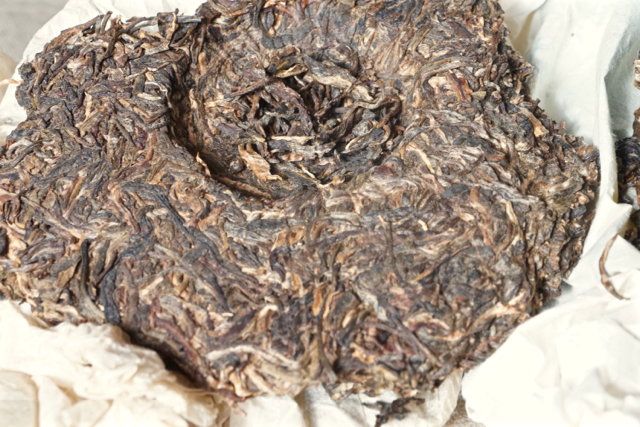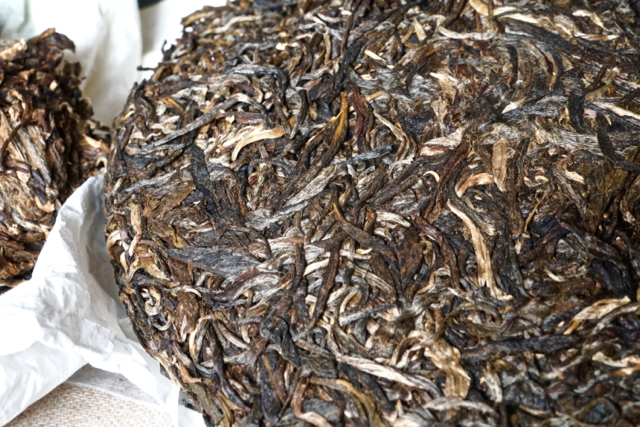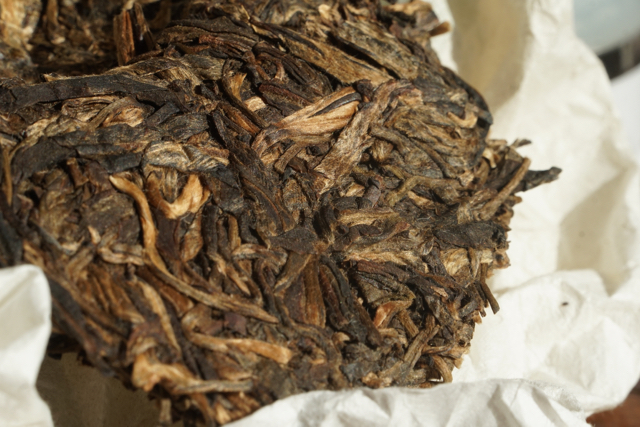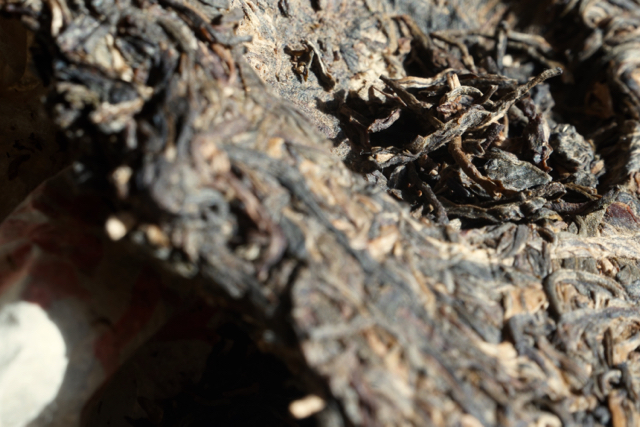Sometimes there are simple choices rendered simple. Long travel hours and days with bags, different rooms, and tents where the senses are happily blasted this way and that…different wake up views and different water supplies all contribute to making tea selections for journeys, relatively ‘simple’ affairs. Simple only because for whatever reasons, the teas I pack are inevitably honed down the same 3….out of a choice of dozens. There are enough variables without making the crucial ritual of the day complicated. Travel (should) condense things down to needs, with an occasional bit of nonsense. This nonsense is usually a tea that is on the fringe of being really special and it is usually a Puerh tea. It is the risky one of the bunch. The teas that I pack have long been calculated for their impact, comfort, and strength. Perhaps uninterestingly though, the teas that are fused to me during journeys is almost exclusively Puerh. Robust, rippingly fresh, deep, rough, and accidently (and occasionally deliberately) brilliant, they have long been the leaves of need.
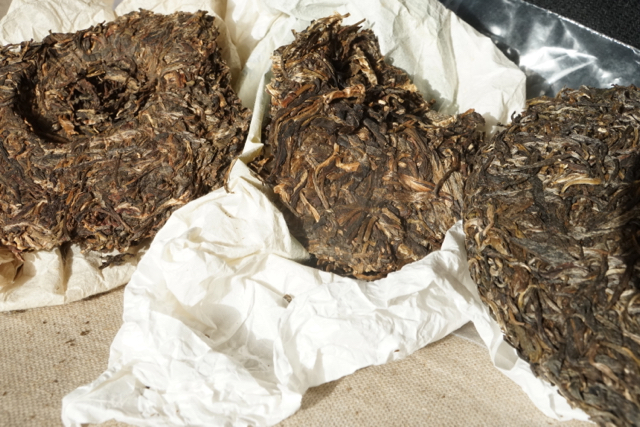
Puerh teas from left to right: Nannuo Sheng (the Nonsense Tea), Ban Pen Sheng, and the He Kai Sheng.
There is a tattered little clothes bag that has been my tea ‘bag’ for a long time and the leaves that find themselves in that bag do vary, but there is a consistency in the three particular teas (barring of course the “nonsense tea”). Being ‘home’ there is that wonderful elixir of time and choice, but travel for me brings the distinct need of dependable vegetal punch, or comforting tonal hits. The ‘nonsense tea’ is the tea of whimsy and odd notes. It is the tea that I don’t reach for first but one that adds some of what tea is all about – variations. It is also something in the tea world that is common but not often acknowledged: the accidental tea. Not necessarily well made or a classic, it becomes something special in its maturation. Its flaws for whatever reason evolve into interesting tonalities and points of interest on the palate.
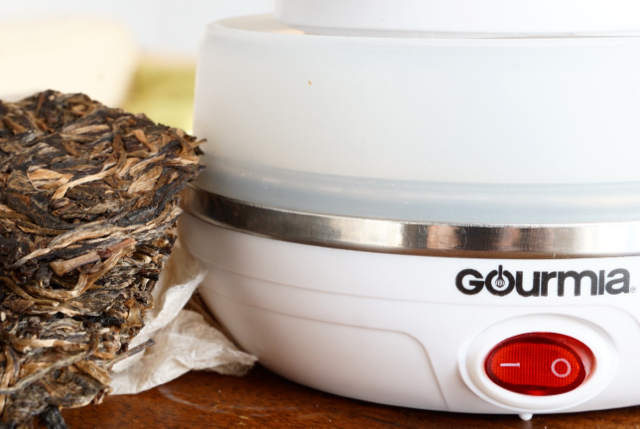
A little contraption that aids…a portable, foldable kettle that compresses down into a size to shove anywhere. Along side it is the delectable Ban Pen.
For the past months of being on the road three leafy delights have been prepared over and over again. Days are brought in with them, afternoons are jolted back by them and evenings can drift off with them. My last months in southern Europe have brought different flavours and textures into the mouth. Marinates, fire-smoked meats, and simple oil-vinegar dressings bring with them their own memories as well as creating new ones. The teas have changed too in their character and abilities mixing with rich wines, and delectable soft goat cheeses. But still they bring pleasure and visceral grip…and that is why they – and not others – are with me.
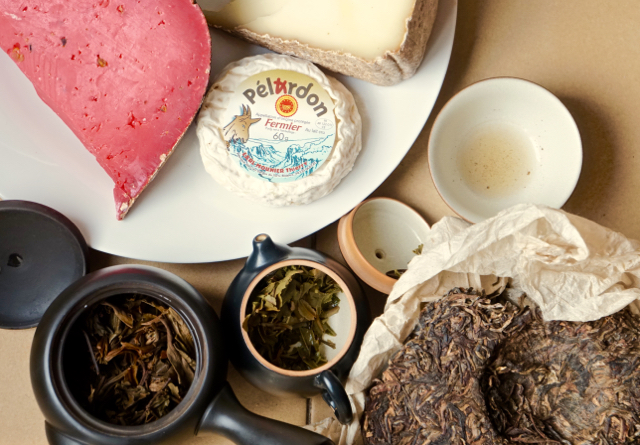
Some of the new collaborations. A host of Tomme cheeses and the local Pelardon, a soft and exquisite goat cheese sitting atop the Puerh.
Geographies and impressions may alter and swerve but something glorious is reached in those unfamiliar spaces and feelings when a shot of predictable vegetal astringency is introduced. It is a remarkable comfort and sense of belonging in an unfamiliar space.
The teas with me for the past months on the road sit in their original curled up and pungent paper wrappers within that little clothing bag in malformed hunks which have been whittled down. Stems are juxtaposed and the wonderful beginnings of dark age stains upon the lighter leaves of the Puerh hunks have appeared. All the teas are raw Sheng Puerhs and all have had at least three years to mellow, age, or just morph.
Locals of Yunnan often explain a kind of ideal ‘age’ of Puerh as being somewhere between 18-36 months old and my own preferences lean this way largely because of time spent with locals at Puerh ground zero, and partly because of that delicious combination of an intact edge to the tea and the hints of developmental softness. Old teas don’t really interest but teas that are in that youthful development stage very much do peak the interest.
Tangs of the coveted vegetal astringency remain in the leaves and stems, while age has ever-so-slightly notched down those bitter bursts. Morning tea sessions are a given but the type of tea to be taken isn’t decided until I’m standing beside the tea hunks peeking at their humble shapes. There is a badly made 2010 Nannuo (Bang Po Old Village) which I purchased from a Hani family years’ ago that for whatever reason (and such is the joy and unpredictability of aged teas) has become something quite wonderful and rough in its ‘age’. Soft, but carrying its long ago, not-so-competently-withered notes, which reveal themselves as slight sour tones from either too long a wither or too thick a layer of leaves during withering. Since I purchased it, this Nannuo Mountain tea had seen a consistently dry storage with clean air and no outside odours to detract from its flaws and character.
Age had calmed it, soothed it but it had retained much of its roughness and it was a tea that even after 8 years hit the molars and etched itself into the enamel and palate. It remained – as I imagined it would for some time to come – a kind of rough and random tea with some flawed brilliance. It was the ‘nonsense tea’ amongst my traveler teas.
Another tea (a beautifully compressed cake of raw He Kai) has long been an astringent treat on every single journey of mine because of its sheer power. A Spring 2014 harvest from trees that were over 100 years old, it was the ‘youngest’ of the Puerhs and the one that carried unapologetic stimulant force from its heavily clayed soils atop Bulang Mountain. Still bristling with green power it had been superbly managed at every stage by an old friend of the Dai minority, Ai Ying. I had purchased leaves in the Spring of their harvest and had them compressed. Still now, the cake looks utterly beautiful having been compressed by hand using carved stones in a little tea production factory in Menghai. Tight, but not so much so that the leaves don’t have channels of air that are able to flow through them. Whittling off morsels isn’t quite the dedicated task that wrenching leaves from the Nannuo cake is, which had been compressed so tight that it was a full workout whittling away even a few leaves off.
The third tea that has been like an elegant antique is a 2012 Ban Pen (also on Bulang Mountain). Rich nutty tones and a high concentration of white buds that have begun to stain dark with age, this tea remains the tea most consistently coveted and yet most ‘protected’ by my need. With only a few of these 357 gram cakes in my collection, I try (and very often fail) to keep it as a kind of treat, preparing a dose of it every few days. Harvested from ancient trees, I do not remember it having been so utterly satisfying in its earlier years as I nibbled away at it. Through time (in its case, around 3.5 years, at the end of 2015) something did transform and it began to hit a sumptuous level of full bodied thick malt flavours. Aged identically to the rest, something in its chemistry (a beautiful accident of nature) had moved it into another realm…at least in my own realm of preferences.
Stimulants and the actual caffeine/theine levels of tea diminish with time but many levels are linked not simply to the ‘type’ or ‘colour’ or even age of a tea, but rather the season in which it was harvested. In all of the three there are plenty of stimulant elements enough to set the blood and brain alight, though the fresher He Kai introduces something forceful in the qi (energy) department. The almost nougat-toned Ban Pen was something more soft finished.
Teas, like moments and sensory points of engagement, are perhaps at their peaking best when they are something visceral and appreciated for what they are in that moment. Raw materials, quality of storage and the attention that hands pay to the leaves aside, it is still about an ability to enjoy a slight alchemic touch of things and time coming together…and of course that irrepressible but very necessary “nonsense tea” that is along for the journey.
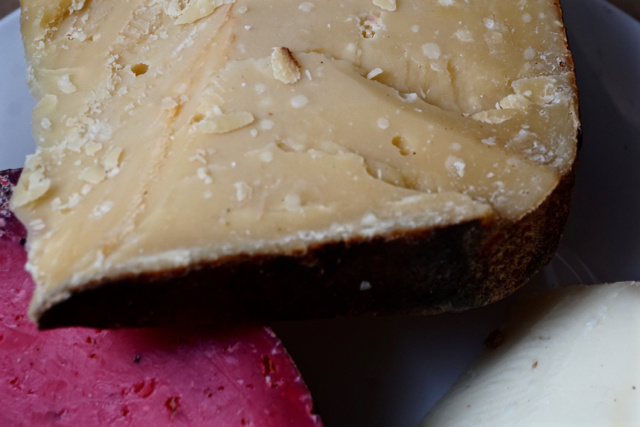
Thought I’d finish off with a tribute to a cheese that left just as indelible impression as the teas did. This aged Tomme was a pungent equal to the leaves.

